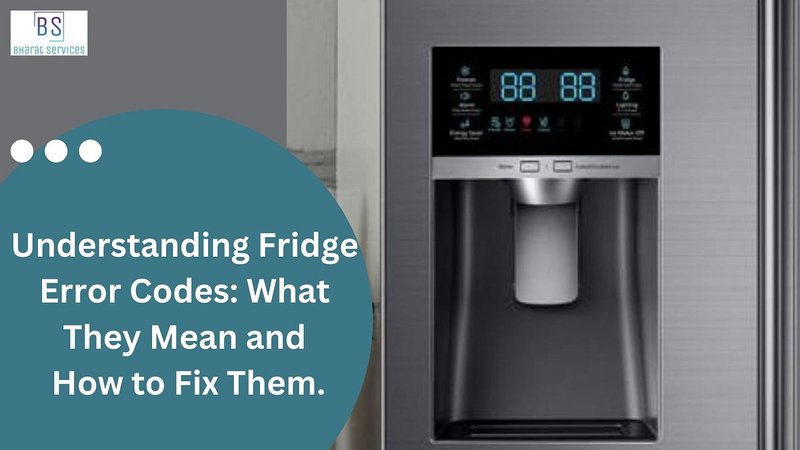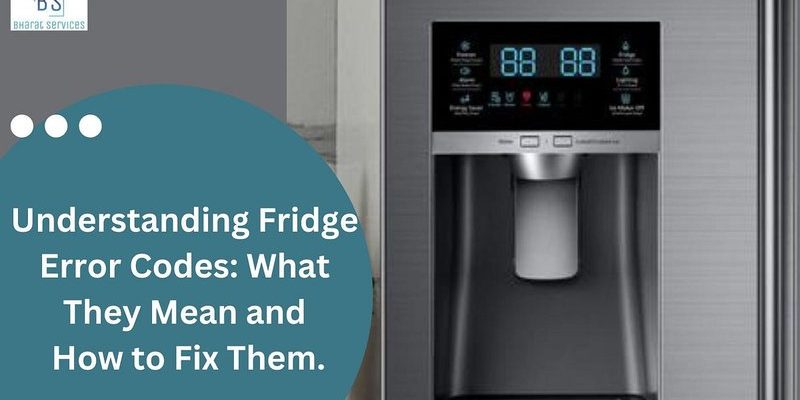
When we talk about resetting appliances, it kind of feels like restarting your computer when it freezes, right? You hope that a simple reset will restore everything back to perfect working order. However, just like with those stubborn software glitches on computers, there’s more to resolving an error code in your fridge than just a quick reset. Error codes are your fridge’s way of communicating that something is amiss—they’re like when your car’s dashboard lights up to alert you about potential issues. So, it’s crucial to understand what the F1 error code signifies and the steps you can take to resolve it.
Understanding Frigidaire Error Code F1
First things first, let’s unravel what the F1 error code really means. This code typically indicates a problem with the refrigerator’s electronic control board. Imagine the control board as the brain of your refrigerator—handling everything from temperature regulation to defrost cycles. When the F1 code flashes up, it’s like your fridge is raising a red flag that something is not quite right with its brain.
The control board, being a complex electronic component, can face issues due to voltage surges, faulty wiring, or simple wear and tear over time. It’s akin to having a hiccup in an electrical circuit, where things aren’t connecting as they should. This might cause your refrigerator to behave erratically, like not cooling effectively or displaying other odd symptoms. The F1 error alerts you to these problems, indicating the need for attention.
But before you begin imagining a hefty repair bill or a mysterious technical fix, let’s explore some straightforward methods to address the issue. Sometimes, it can be as minor as a loose wire or a bit of moisture causing the control board to misbehave. Evaluating these simple causes can lead you to a quick fix without needing professional intervention.
Does Resetting Help?
Alright, so can resetting your Frigidaire refrigerator fix the F1 error code? Here’s the deal: a reset might temporarily clear the code, but it’s not a guaranteed fix for the underlying problem. Think of it this way—resetting is like putting a bandage on a wound without treating the root cause. It might make the issue less visible temporarily, but it won’t necessarily solve it.
To reset your refrigerator, you’ll usually need to unplug it from the power source for about five minutes. When you plug it back in, the system might recalibrate and function normally for a while, at least until the error surfaces again if the root cause isn’t addressed. That’s because a reset merely interrupts the power supply, allowing the control board to reboot and possibly clear minor electronic glitches.
However, if the F1 error persists after a reset, it suggests there’s a deeper issue at play. In that case, it might be time to delve deeper or seek professional assistance. Just like when you have a persistent headache that doesn’t go away with just rest, tackling the root cause head-on is important to prevent reoccurrence.
What Else Can You Do?
If resetting doesn’t do the trick, you might be wondering what else is in your power to do. Here’s where a bit of investigative work comes in handy. Start by checking for any visible signs of damage or wear and tear around the control board area. Look for burnt marks, loose wires, or any components that seem out of place. It’s similar to checking the wiring on a lamp when the bulb isn’t working—sometimes it’s the simple things.
Another approach is to ensure that your fridge’s connections are secure and that there’s no moisture or dirt affecting the electronic components. A gentle cleaning around the panel can sometimes dislodge minor obstructions causing the error. If you’re comfortable handling basic electronic components, you might try reseating the connectors on the control board, ensuring they’re firmly in place.
If these steps sound daunting, or you’re unsure about handling electronic parts, it might be best to call in a professional. A trained technician can diagnose the issue more accurately and advise on necessary repairs or replacements. Just like you’d trust a mechanic with a tricky car problem, trusting a fridge expert could save you time and prevent potential mishaps.
Preventative Tips for the Future
Nobody wants to face repeated issues with their household appliances, especially something as crucial as a refrigerator. To minimize the chances of encountering the F1 error again, consider some preventative maintenance tips. Regularly check and clean the back coils of your fridge to ensure they’re free from dust and debris. This simple action can help in maintaining efficient cooling and prevent undue stress on the control board.
Additionally, investing in a surge protector for your refrigerator might be a wise move. It acts like a safety net, preventing unexpected voltage spikes from damaging your fridge’s electronic components. Much like wearing a helmet when biking, it adds an extra layer of protection.
Lastly, keep your fridge at a comfortable distance from heat sources and ensure it has proper ventilation. These practices help in reducing the load on your refrigerator and prolong its lifespan. Routine maintenance might seem like an extra chore, but it’s akin to regular check-ups that keep everything running smoothly.
In conclusion, while resetting your Frigidaire refrigerator can sometimes help, it’s not a foolproof solution for tackling the F1 error code. Take a moment to understand what the error signifies and gauge whether it’s something you can manage on your own or if professional help is needed. By taking proactive steps, you can ensure your refrigerator continues to hum along happily, keeping your groceries fresh and your kitchen running smoothly.
